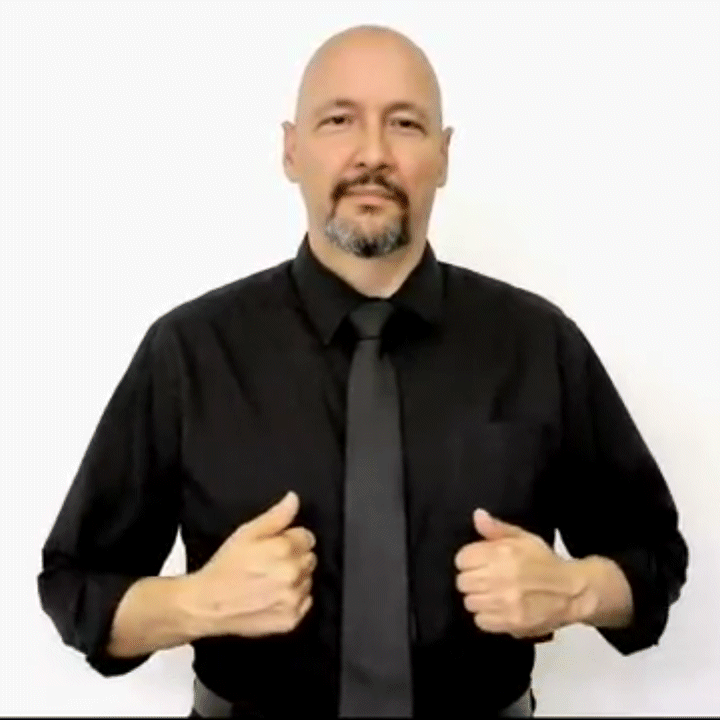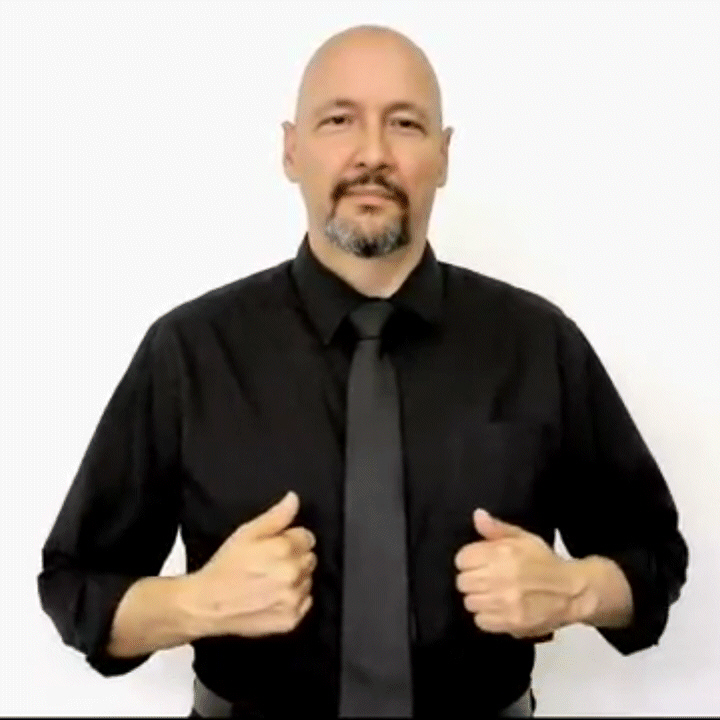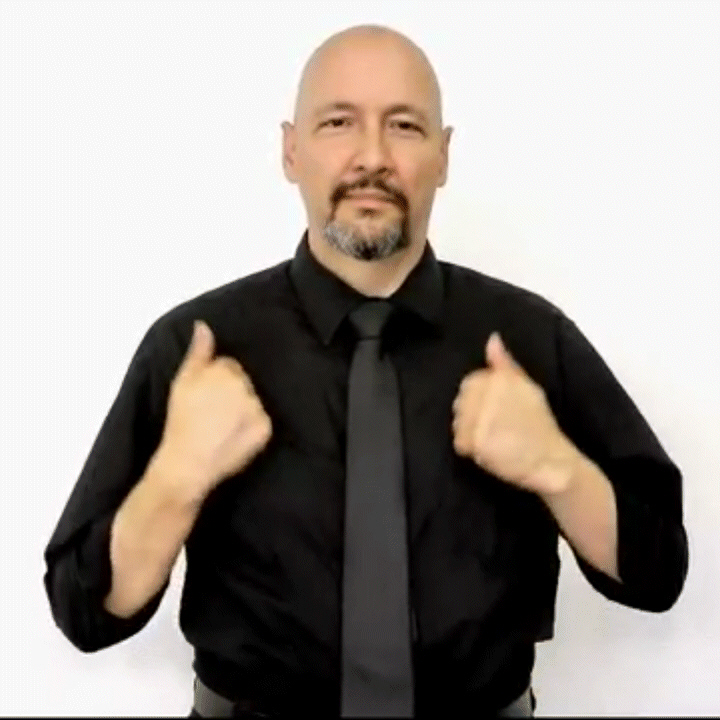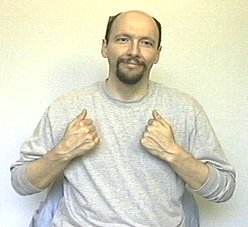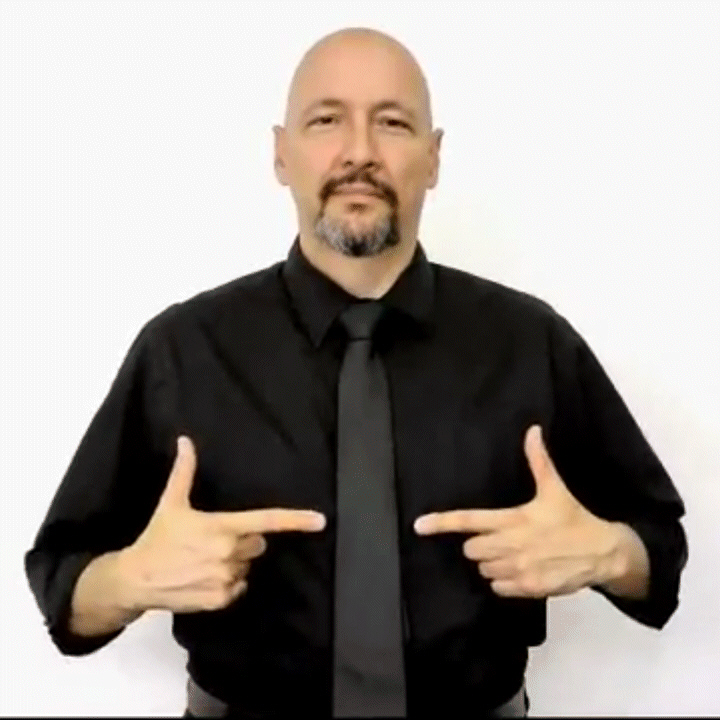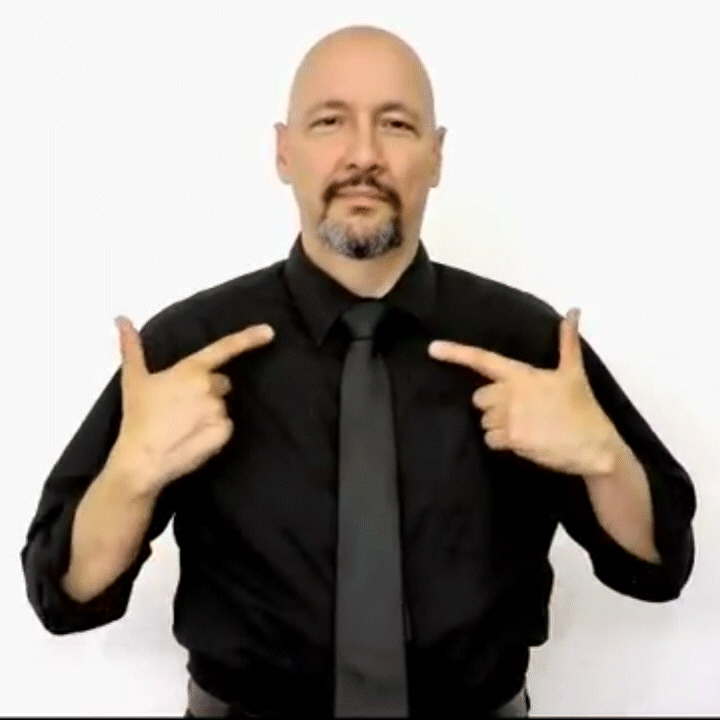American Sign Language:
"live / address"
LIVE / survive / alive / address
YOUR ADDRESS WHAT?
Notes:
An individual I know insists that the sign ADDRESS should always be done with a double movement to mean "address" otherwise it will mean "live." Her husband however isn't convinced. Neither am I. So, if you ever take her class make sure to do it her way (using a double movement) since she will be giving the grade.
Technically though, she has a good point. Nouns of noun/verb pairs (like ADDRESS-noun & LIVE-verb) do tend to use a double movement. On the other hand, high speed signing often drops repetitive movement. For example, the combination of the signs "EMAIL ADDRESS" almost always drops the "double movement" of the sign ADDRESS.
If you do the sign ADDRESS in isolation you tend to use a double movement. This sign really isn't worth arguing over since you can see expert signers doing it either way.
Note: Some people do the sign "LIVE" using "L" handshapes on both hands (This is an example of "initialization"). Again. Not worth arguing about. But if your instructor or friend likes it a certain way, do it that way.
LIVE / ADDRESS / / LIFE / SURVIVE:
Note:
The sign "ADDRESS" can be used to mean several concepts like: life, life, and survive.
It is similar to the "live" sign, except instead of using "L" hands it uses "A" hands. The "A" handshape version of this sign can actually be used to mean "live" as in "Where do you live" = "YOU ADDRESS WHERE?"If you want to know where someone lives currently, you could sign, "YOU ADDRESS/live WHERE?" (using a single movement on the sign "ADDRESS/live") Which would mean "You live where?" and/or Where do you live?
YOU LIVE WHERE?
So, keep in mind that you can use the sign "ADDRESS" to mean either "address," "live," "alive," or even "survive."You might see people sign "ADDRESS" to mean "alive." As in, "HE STILL LIVE?" (Meaning, "Is he still alive?") Or you could use the initialized "LIVE" sign for that.
If you need to make a distinction between ADDRESS and LIVE treat this sign as a noun/verb pair and sign:
ADDRESS: double movement (smaller movement done twice)
LIVE: single movement (larger movement done once).
LIVE:
(initialized version)This version of "live" is "initialized" with an "L." It cannot be used to mean "address."
Use a single movement, straight up.
Question: A student asks: "How would u sign "life"? is it the same thing as "live"?"Answer: You could sign life the same as the initialized form of LIVE but if you plan on taking an ASL test any time soon I recommend you simply do the version of the sign that uses "A" handshapes. That one sign can mean: Address / live / life / survive.
Note:
If you want to know where someone is from, you would sign "WHERE FROM YOU?
See: "Where are you from?"
OPTIONAL DISCUSSION / no need to read beyond this...
Dear Dr. Bill,
advanced signers by signing "FROM YOU?" while furrowing your eyebrows.
I am presently taking an ASL class (this time at a Community College with Gallaudet professors, reason why going there, for them as teachers!) and am having some problems with the WAY they are teaching this course. I've taken private lessons from a Gallaudet alumni who teaches in small groups, is a storyteller, signs BEAUTIFULLY (OMG!), and in 2002 was taking this SAME EXACT course (at the same college, but with a VERY different book - and teacher)...anyway...in one of your lessons you state that it is okay to sign, "WHERE FROM YOU?"
I have always been taught that in ASL the English question:" Where are you from?" would be translated into ASL as:
"You from where you?" as opposed to "Where from you?"
I can deal with the new signs and different meanings for the same sign, but I'm getting so confused due to learning from so many different people, all whom seem to have different ideas of how to TEACH sign, all are Native ASL users, and they are also using different ways of forming "sentence" structure, which is the MOST confusing to me.
-- Name on file
Dear Student,
The concept of "Where are you from?" is typically expressed by
In "that" specific question (Where are you from?) the concept of "WHERE" can easily be expressed by the furrowed eyebrows -- without needing to use the WHERE sign. Sure, you can add the sign WHERE to the signs FROM and YOU, but it is not needed.
In general in ASL we do tend to put "wh" type signs (WHO, WHAT, WHEN, WHERE, WHY, & HOW) at the end of question sentences.
To understand why we do this it helps to realize that it feels strange and/or uncomfortable to hold a WH facial expression (furrowed eyebrows) for the duration of a medium length or longer sentence (four signs or more).
So, for longer sentences we tend to move the WH question to the end.
The facial expressions we use in ASL to form questions are the equivalent of how Hearing people raise the tone of their voice.
Here is the thing to understand though, when Hearing people ask very short questions, they raise the tone of their voice throughout the whole question.
They do this because the meaning of this very short utterance is actually made more clear by using the raised tone of voice throughout the whole sentence (since the duration is so short). Try it yourself. Say "Are you GOING?" and only emphasize the last word. Then say it again and emphasize all three words, "ARE YOU GOING?"
You will probably think that it feels "weird" to try to say "Are you" (normal voice) and then switch over to "GOING?" (high tone) for just the last word. It feels "better" to just say all three words in high tone since the sentence is so short. It is more smooth and less jarring to use one tone for a short sentence than to try to cram two different tones into a three word question.
The same thing applies to real life signed conversations. Short questions can and often do place the WH-type sign at the beginning of the sentence since it becomes more smooth and "economical" to form one facial expression for a three-sign sentence using a non-topicalized sentence structure than it is to form two different facial expressions for a 3-sign sentence using a topicalized sentence structure. Or the "WH"-type sign is dropped altogether. For example, when asking "What time is it?" -- people often just tap their wrist twice while furrowing their eyebrows.
Go to a Deaf event at which there are parents and children and you will see phraseology such as: "WHERE MOM?" used to ask "Where is your mother?" and/or "Where is mom?"
Many ASL teachers (even the really "good ones" who sign "really well" and teach at prestigious universities) have pre-conceived notions and/or biases that prevent them from wrapping their minds around this principle. Some teachers are so preoccupied with trying to make sure ASL doesn't look like signed English -- that they move all WH-type questions to the end of every sentence, whether it is warranted or not.
Cordially,
Dr. Bill
*
Want to help support ASL University? It's easy:
DONATE (Thanks!)
* Another way to help is to buy something from Dr. Bill's "Bookstore."
* Want even more ASL resources? Visit the "ASL Training Center!" (Subscription
Extension of ASLU)
* Also check out Dr. Bill's channel:
www.youtube.com/billvicars
You can learn American Sign Language (ASL) online at American Sign Language University ™
ASL resources by Lifeprint.com © Dr. William Vicars
